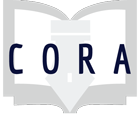Comment envoyer une minorité d'étudiants surmotivés sur des objectifs pédagogiques intégrés et connexes dont le parcours est structuré ?
1) Faire une courte introduction engageante (15min.)
2) Identifier la minorité surmotivée et leur distribuer un parcours.
3) Assurer une supervision mininal avec un suivi distant et ponctuel au besoin.
Avec 2 exemples de parcours: une auto-initiation en 5 niveaux pour contribuer à Wikipédia; et un programme de 12 semaines pour démarrer un blogue sur un sujet de recherche.
Assignments
Synthèse ludique des ateliers d'évaluation des sources. Peut être utilisé comme récompense : un exemplaire plastifié est offert à l'étudiant qui trouve l'erreur volontairement insérée dans la formation (les autres n'ont que la feuille en papier). Autre utilisation : trouver le document le plus faible parmi vos références, ou parmi les références du syllabus de tel cours.
The purpose of this activity is to inspire students to adopt structured methods when they explore and retrieve information. It is based on lab notebooking methods and on managing and documenting the flow of references in Zotero, a reference management software.
Art and design students are almost always asked to write about their work, in the form of an artists’ statement, at some point in their academic career. This is a skill that is crucial as they move from student to professional or practicing artist because it gives them the opportunity to reflect on their work, share concepts and develop their authority in their field, and, very importantly, discuss how their work builds on the work of others who share similar themes and/or processes.
Environmental science students critically analyzed the Environmental Protection Agency’s (EPA) website and its treatment of climate change during the Trump, Obama, and Bush presidencies. This library “warm-up” activity was designed to raise awareness of data fragility and the long-term accessibility of government websites. As future science professionals, it’s important to think about how this impacts scientists and their work. Students were introduced to several tools including: The Internet Archive’s Wayback Machine, End of Term Archive, and Data Refuge.
This short lesson introduces identifying search terms with a Koosh ball. The 10 minute activity can be used in one-shot instruction sessions or built in to credit bearing information literacy courses.
A one-shot or seminar class on fake news tied to source evaluation. Examination of the factors at play in the creation of misinformation; insight into how to select sources; tools and strategies for evalutating content of stories, authors, and news outlets.
Students will learn how serial publications are presented in databases and how to read them chronologically to determine trends over time using the MLA International Bibliography.
The Value of Free and Deep Web Resources (aka Google vs. Databases)
A hybrid teaching module with two elements: an interactive online module for students to complete ahead of class and a face-to-face lesson plan that builds on the skills learned in the online lesson. The in-class session provides students with a critical exploration of the purchasing power of minimum wages across states and/or the earnings gap between men and women employed full time.
